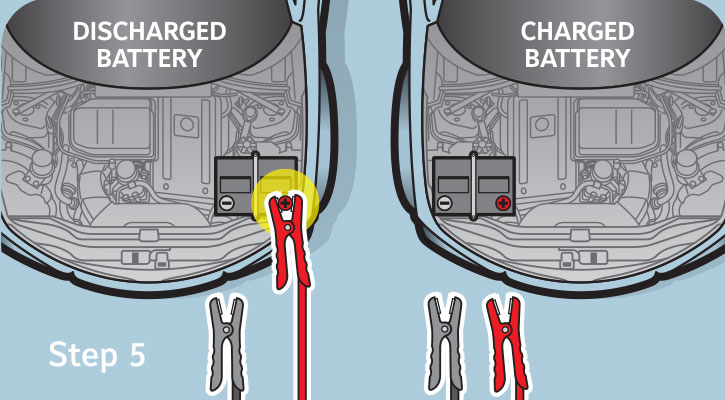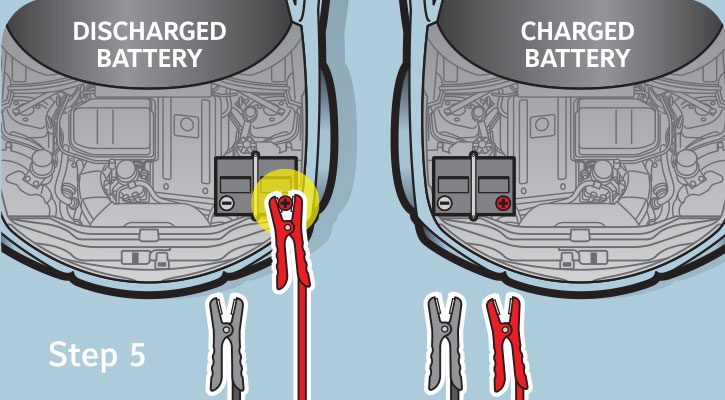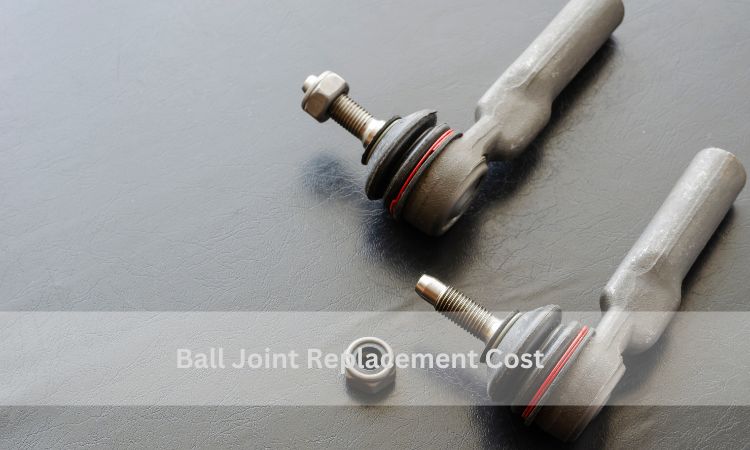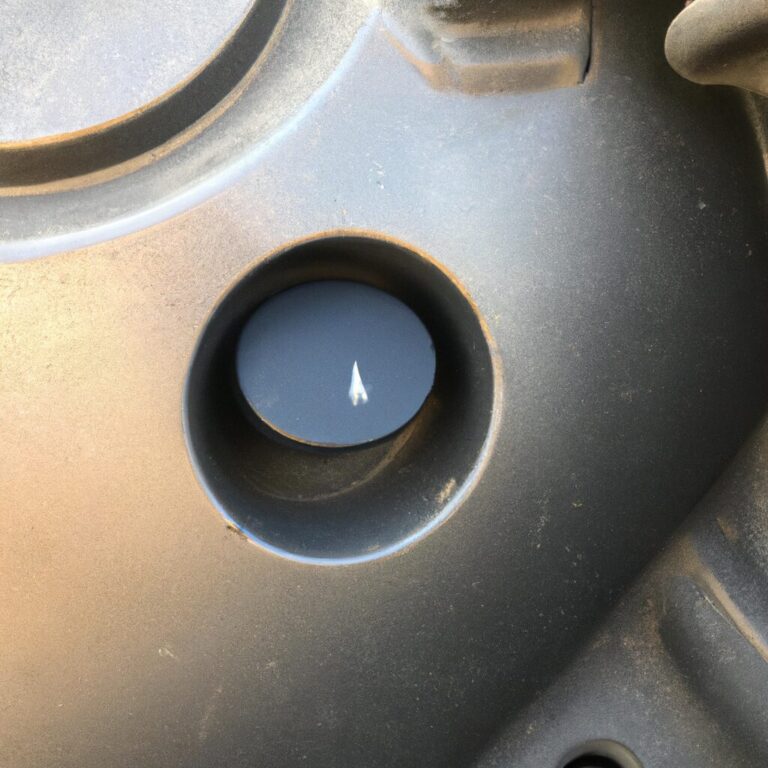how to charge dead car battery

Introduction
Why charging a dead car battery is important
Charging a dead car battery is crucial to ensure the proper functioning of your vehicle. A dead battery can leave you stranded and unable to start your car, causing inconvenience and potential safety risks.
The consequences of neglecting a dead car battery
Neglecting a dead car battery can lead to several consequences that could negatively impact your vehicle and its components. Some of these consequences include:
1. Engine performance issues: A dead battery can cause strain on the alternator, which is responsible for generating power to run the engine and recharge the battery. This strain can result in reduced engine performance and may even lead to engine damage if left unaddressed.
2. Electrical system malfunctions: A dead battery can affect the electrical components of your vehicle, including the lights, radio, and other accessories. These malfunctions can disrupt your driving experience and compromise your safety on the road.
3. Alternator damage: A dead battery can put excessive strain on the alternator, which may lead to its premature failure. If the alternator fails, it will not be able to generate enough power to keep the engine running and recharge the battery, resulting in a complete breakdown of the vehicle.
4. Diminished battery life: Continuously neglecting a dead battery and relying on jump-starts or quick charging methods can significantly reduce the overall lifespan of the battery. This means you may have to replace the battery more frequently, incurring additional expenses.
To avoid these consequences, it is important to charge your car battery properly and maintain it regularly. By following the correct charging procedures and using a suitable battery charger, you can extend the life of your battery and ensure optimal performance of your vehicle.
Investing in a high-quality battery charger that provides a slow and controlled charging process is essential. This type of charger helps raise the battery’s charge without raising its temperature, minimizing the risk of damage and maximizing the battery’s lifespan.
In conclusion, charging a dead car battery is necessary to keep your vehicle running smoothly and avoid potential issues caused by neglecting the battery. By taking care of your battery and using a suitable charger, you can ensure a reliable and long-lasting vehicle performance.
Understanding the Basics
Different types of battery chargers and their functions
When it comes to charging a car battery, there are a few different types of battery chargers available on the market. Each type has its own specific functions and features. Here are the most common types:
1. Trickle Charger: This type of charger is designed to slowly charge the battery over an extended period of time. It delivers a low current to the battery, which helps maintain its charge without overcharging.
2. Fast Charger: As the name suggests, this type of charger is designed to quickly charge the battery. It delivers a higher current to the battery, allowing it to charge at a faster rate. However, it’s important to note that fast charging can potentially damage the battery if not done correctly.
3. Smart Charger: A smart charger is a more advanced type of charger that is capable of monitoring the battery’s condition and adjusting the charging process accordingly. It can detect if the battery is fully charged or if it needs a maintenance charge.
How a car battery works
Before we dive into the process of charging a car battery, it’s important to understand how a car battery works. A car battery is an essential component of a vehicle’s electrical system. It provides the necessary power to start the engine and run various electrical components, such as lights, radio, and power windows.
Car batteries are typically lead-acid batteries, which consist of six cells connected in series. Each cell generates about 2 volts, resulting in a total voltage of 12 volts for the entire battery.
The charging process involves converting electrical energy into chemical energy, which is stored in the battery. When a car engine is running, the alternator generates electricity to power the vehicle’s electrical system and simultaneously charges the battery.
During the charging process, the alternator produces a higher voltage than the battery voltage, which allows the current to flow into the battery and recharge it. This process reverses the chemical reactions that occur when the battery discharges, restoring the battery’s charge.
It’s important to note that not all car batteries are the same. Different vehicles may require different types of batteries, and the charging process may vary slightly depending on the battery’s specifications. Always refer to your vehicle’s manual for specific instructions on charging your car battery.
By understanding the basics of different types of battery chargers and how a car battery works, you can confidently and safely charge your car battery when needed. Remember to follow the manufacturer’s instructions and take necessary safety precautions during the charging process.
Preparing the Battery
Checking the battery condition and voltage
Before you begin the charging process, it’s important to inspect the condition of your car battery and check its voltage. This will help you determine if the battery needs to be charged or if there are any underlying issues that need to be addressed. Here’s how you can do it:
1. Inspect the battery: Look for any signs of damage, such as cracks or leaks. Check the battery case for any swelling or bulging, which could indicate a battery failure. If you notice any of these issues, it may be best to consult a professional for further assistance.
2. Test the battery voltage: To determine the battery’s voltage, you can use a multimeter or battery tester. Simply connect the positive probe to the positive terminal of the battery and the negative probe to the negative terminal. The voltage reading should be around 12.6 volts for a fully charged battery. If the voltage is significantly lower, it’s a good indication that the battery needs to be charged.
Cleaning the battery terminals and cables
Clean battery terminals are crucial for a reliable electrical connection and proper charging. Over time, corrosion and dirt can build up on the battery terminals and cables, hindering the charging process. Here’s how you can clean them:
1. Disconnect the cables: Before cleaning the terminals, make sure to turn off all electronics in your vehicle and remove the negative cable first, followed by the positive cable. This will prevent any accidental electrical shocks or short circuits.
2. Remove corrosion: Use a battery terminal cleaning brush or a mixture of baking soda and water to remove any corrosion or dirt from the terminals and cables. Gently scrub the terminals until they are clean and free from any buildup. Wipe away any excess moisture with a clean cloth.
3. Reconnect the cables: Once the terminals and cables are clean, reconnect the positive cable first and then the negative cable. Make sure the connections are tight and secure to ensure proper electrical conductivity.
By properly preparing your car battery before charging, you can ensure a more effective and safe charging process. Remember to always follow the manufacturer’s instructions and take necessary safety precautions to avoid any mishaps.
Disconnecting Electronics
When it comes to disconnecting a car battery, there are a few important steps to follow to ensure your safety and the proper functioning of your vehicle. Let’s take a closer look at how to disconnect the battery and why it’s necessary.
Powering off all electronics in the vehicle
Before you begin the process of disconnecting the battery, it’s crucial to power off all electronics in your vehicle. This includes interior lights, radios, and any other electrical components. This step is necessary to prevent any electrical surges or sparks that could occur when disconnecting the battery.
The correct order to disconnect the cables
When disconnecting the battery, it’s essential to follow the proper sequence to avoid any potential hazards. Here are the steps to disconnect the cables safely:
1. Start by turning off the car engine and removing the key from the ignition. This step is important to reduce the risk of electrocution.
2. Locate the negative terminal of the battery, which is usually marked with a “-” symbol. Using a wrench or socket, loosen the nut on the negative terminal and carefully remove the cable from the terminal.
3. Once the negative cable is disconnected, proceed to the positive terminal, marked with a “+” symbol. Again, use a wrench or socket to loosen the nut and remove the positive cable from the terminal.
4. It’s important to note that the order of disconnecting the cables is crucial. By removing the negative cable first, you minimize the risk of short circuits and electrical shock. Reversing the order could potentially cause damage to your vehicle’s electrical system.
By following these steps in the correct order, you can safely disconnect the battery without any potential hazards.
Remember, if you are unsure or uncomfortable performing this task on your own, it’s always best to consult a certified mechanic for assistance.
In the next section, we will discuss how to prepare the battery for charging and the different types of battery chargers available. Stay tuned!
Connecting the Battery Charger
Choosing the appropriate charger for your car battery
Before connecting the battery charger, it’s important to ensure that you are using the appropriate charger for your specific car battery. Car batteries come in different sizes and power capacities, so it’s crucial to choose a charger that is compatible with your battery. Here are a few factors to consider when selecting a charger:
1. Amp Rating: The amp rating of the charger determines how quickly it can charge your battery. It’s important to choose a charger with an amp rating that matches the requirements of your battery. Too low of an amp rating may result in a slow charging process, while too high of an amp rating can potentially damage your battery.
2. Charging Modes: Some chargers offer multiple charging modes, such as slow charging or fast charging. Depending on your needs, you can select the appropriate charging mode for your battery.
3. Safety Features: Look for chargers that have built-in safety features, such as protection against overcharging, short circuits, and reverse polarity. These features help to prevent any damage to your battery and ensure safe charging.
Step-by-step guide to connecting the charger
Once you have selected the appropriate charger for your car battery, you can proceed with connecting the charger. Here is a step-by-step guide to help you through the process:
1. Make sure the charger is turned off and unplugged from the power source before beginning the connection process.
2. Locate the positive terminal (+) and the negative terminal (-) on your battery. These terminals are usually marked with the corresponding symbols.
3. Attach the red positive cable from the charger to the positive terminal on the battery. Ensure that the connection is secure.
4. Connect the black negative cable from the charger to the negative terminal on the battery. Again, make sure the connection is tight.
5. Set the charger to the slowest charging rate. This is especially important if your battery is severely discharged or if you are using a charger with a high amp rating.
6. Once everything is securely connected, you can turn on the charger and set the timer according to the recommended charging time for your specific battery. It’s essential to follow the manufacturer’s instructions for the charging duration.
7. While the battery is being charged, regularly check the charger’s amp meter to monitor the progress. The amp meter will typically read a higher value for a dead battery and decrease as it gets closer to a full charge.
8. After the recommended charging time has passed, turn off the charger before removing the cables. Always remember to disconnect the negative cable first, followed by the positive cable.
By following these steps, you can safely connect the battery charger to recharge your car battery. Remember to always refer to the manufacturer’s instructions and exercise caution to prevent any accidents or damage during the charging process.
In the next section, we will discuss how long you should charge a car battery and some additional tips for maintaining a healthy battery. Stay tuned!
Charging the Battery
Now that we have discussed the process of disconnecting the car battery, it’s time to move on to the next step – charging the battery. Charging a dead car battery requires the use of a battery charger, and there are a few important factors to consider during this process.
Recommended charging time for a dead car battery
Typically, it can take anywhere from several hours to even a full day to recharge a dead car battery, depending on the charger’s output amperage and the state of charge of the battery. The time required can also vary based on the type and capacity of the battery.
Most plug-in battery chargers in the market estimate a charging time of 10-24 hours to fully charge a car battery. However, if your battery is only partially discharged (around 50 percent), it can take about eight hours of highway driving to charge it to almost full capacity. It’s important to note that these estimates are approximate and can vary depending on various factors.
The importance of low amperage for overnight charging
For a totally dead battery, it is generally recommended to charge it overnight at low amperage. This helps to prevent any additional stress to the battery cells and ensure a more thorough and efficient charge. Many battery chargers offer multiple amperage settings, allowing you to choose a lower amperage for overnight charging.
It’s crucial to carefully read the instructions that come with the charger to ensure you are using it correctly and selecting the appropriate charging settings. Following the manufacturer’s guidelines will help ensure safe and effective charging without damaging the battery or the vehicle’s electrical system.
Additionally, it’s worth noting that the charging voltage and amperage required by your car battery are managed by your car’s electrical system. This means that the charger’s output amperage should be compatible with your car’s charging requirements. If you are uncertain about the specific charging needs of your battery, it’s advisable to consult your vehicle’s manual or seek guidance from a certified mechanic.
By following the recommended charging time and utilizing low amperage for overnight charging, you can effectively charge a dead car battery and restore its power. However, if you are unsure about the charging process or have any concerns, it’s always best to consult a professional for assistance.
In the next section, we will discuss how to prepare the battery for reconnection and the importance of proper maintenance to prolong the battery’s life. Stay tuned!
Disconnecting the Charger
Now that we have discussed the process of charging a car battery, it’s important to understand when the battery is fully charged and how to safely disconnect the charger. Properly disconnecting the charger is crucial to prevent any damage to the battery or the electrical system of the vehicle.
Understanding when the battery is fully charged
To determine if the battery is fully charged, you can refer to the charger’s instructions or indicator lights. Many chargers have a built-in feature that signals when the battery has reached its desired charge level. This could be in the form of a green light, a beep, or a digital display showing the battery’s voltage.
It’s important not to disconnect the charger prematurely, as this can result in an insufficient charge and may lead to problems starting the vehicle. Taking the time to ensure the battery is fully charged will help extend its lifespan and prevent any potential issues.
Step-by-step guide to safely removing the charger
Once you have confirmed that the battery is fully charged, you can proceed to safely disconnect the charger using the following steps:
1. Switch off the charger: Locate the designated power switch on the charger and turn it off. This will ensure that no further charging occurs once the charger is disconnected.
2. Unplug the charger: Disconnect the charger from the power outlet. This will eliminate any risk of electrical shock or short-circuiting.
3. Remove the negative cable: Identify the negative cable, which is usually black, and carefully remove it from the battery’s negative terminal. It’s important to remove the negative cable first to avoid any accidental sparks or potential damage.
4. Remove the positive cable: Locate the positive cable, typically colored red, and disconnect it from the battery’s positive terminal. By removing the positive cable after the negative cable, you further minimize the risk of sparks or electrical discharge.
By following these steps, you can safely disconnect the charger and prepare the battery for reconnection. It’s crucial to handle the cables with care and avoid touching any metal surfaces while they are still connected to the battery.
Properly disconnecting the charger not only ensures the safety of the user but also helps maintain the integrity of the battery. By adhering to these guidelines, you can effectively charge your car battery and take the necessary precautions to prevent any potential damage.
In the next section, we will discuss how to prepare the battery for reconnection and the importance of proper maintenance to prolong the battery’s life. Stay tuned!
Additional Maintenance Tips
Regular check-ups and battery health maintenance
Proper maintenance is essential for extending the life and performance of your car battery. In addition to the steps mentioned earlier, there are a few other maintenance tips to keep in mind:
1. Regularly check the electrolyte levels: Some car batteries require periodic maintenance of the electrolyte levels. If your battery has removable caps, carefully remove them and check the electrolyte levels. If the levels are low, you can top them up with distilled water. However, it’s important not to overfill the cells as it can lead to electrolyte overflow and damage the battery.
2. Keep the battery clean and free from debris: Regularly inspect the battery for any dirt, dust, or debris that may have accumulated. Use a damp cloth or a battery cleaning brush to remove any dirt or grime from the battery casing. This will help prevent corrosion and ensure a good connection between the terminals and the wires.
3. Avoid excessive heat exposure: High temperatures can accelerate the chemical reactions inside the battery, leading to faster self-discharge and reduced overall battery life. Whenever possible, park your car in the shade and avoid exposing the battery to direct sunlight. This will help maintain the battery’s optimal performance and prolong its lifespan.
Other factors that may affect the battery’s performance
Apart from regular maintenance, there are a few other factors that can impact the performance and lifespan of your car battery:
1. Driving habits: Short trips and frequent starts can put a strain on the battery as it doesn’t have enough time to fully recharge. To maintain a healthy battery, try to incorporate longer drives occasionally to allow the battery to recharge fully.
2. Electrical system load: Excessive use of electrical accessories, such as headlights, air conditioning, and audio systems, can put a strain on the battery. Make sure to turn off any unnecessary electrical loads when the engine is not running to conserve battery power.
3. Extreme temperatures: Both extreme cold and extreme heat can affect battery performance. In cold weather, the battery’s capacity can decrease, making it harder to start the engine. On the other hand, excessive heat can lead to faster self-discharge and reduced battery life. If you live in an area with extreme temperatures, consider using a battery insulation blanket or installing a battery thermal management system.
By following these additional maintenance tips and considering other factors that can affect performance, you can ensure that your car battery remains in good condition and provides reliable power when you need it. Remember, proactive maintenance can save you from unexpected breakdowns and expensive replacements down the line.
In conclusion, car battery maintenance is crucial for ensuring the reliable operation of your vehicle. By regularly checking the battery, keeping the terminals clean, and following the recommended charging procedures, you can extend the life of your battery and avoid potential issues. Incorporating these maintenance tips into your routine car care will provide you with peace of mind and keep your vehicle running smoothly for years to come.
Conclusion
Summary of the charging process
In this article, we have discussed the step-by-step process of how to charge a car battery. From locating the battery terminals to selecting the appropriate charger, we have covered the essential steps to ensure a successful charging process. It is important to follow the manufacturer’s instructions and take the necessary safety precautions while charging your car battery.
When it comes to charging a dead car battery, the time required can vary depending on the charger’s amperage and the state of the battery. Trickle chargers with low amperage can take overnight to fully recharge a battery, while chargers with higher output amperage can charge a battery within one to six hours.
It is crucial to disconnect the charger and remove the cables once the battery is fully charged. This helps prevent any overcharging or potential damage to the battery. Always remember to unhook the negative (black) clamp first when removing the cables.
Importance of consistent battery maintenance and care
Regular maintenance and care are essential for extending the life and performance of your car battery. Along with the charging process, there are a few additional maintenance tips to keep in mind. Regularly checking the electrolyte levels, keeping the battery clean, and protecting it from excessive heat exposure can help maintain optimal battery performance.
Factors such as driving habits, electrical system load, and extreme temperatures can also impact the battery’s performance and lifespan. By incorporating longer drives to allow the battery to fully recharge, turning off unnecessary electrical loads, and protecting the battery from extreme temperatures, you can maximize the battery’s efficiency and longevity.
Consistent battery maintenance is crucial for the reliable operation of your vehicle. By following the recommended maintenance steps and considering other factors that can affect the battery’s performance, you can avoid unexpected breakdowns and expensive replacements. Incorporating these maintenance practices into your routine car care will provide you with peace of mind and keep your vehicle running smoothly for years to come.



